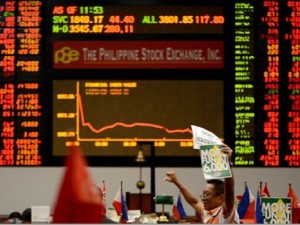Philippine monetary authorities are seen keeping key policy rates on hold well into 2016 as the full effects of recent and expected policy moves by major economies such as the United States, China and Europe are assessed.
Government data released Friday showed inflation accelerating at a faster-than-expected pace of 1.1 percent in November due to higher food costs, recently utility rate hikes and the waning effects of cheap fuel.
This confirmed expectations that inflation for the entire year would fall short of the state’s projected range of 2 to 4 percent, although a reaction of policymakers to short-term developments is unlikely.
“With inflation slipping below the lower-end of the Bangko Sentral ng Pilipinas (BSP) inflation target once more, monetary authorities have shifted focus to the medium-term inflation path,” BPI economist Nicholas Mapa said.
Inflation in November showed the rate of price increases bottomed out the month before after reaching a record low of 0.4 percent.
BSP Governor Amando M. Tetangco Jr. said the acceleration last month affirmed the central bank’s current policy stance. “With credit and domestic liquidity growth rates also stabilizing, these signal that our stance of policy right now is appropriate,” he said.
The BSP’s main goal is to protect the consumers’ purchasing power by keeping prices stable. This is done through adjustments in interest rates and the management of the economy’s money supply.
Having cheaper financing spurs demand, at the risk of stoking excessive price pressures. Restricting the flow of money in the economy through higher interest rates keeps inflation in check but may stunt economic growth.
Tetangco said the BSP was closely watching developments overseas and its effects on domestic markets. The US Federal Reserve is expected to hike rates this month, in its first move to tighten monetary settings for the first time in nearly a decade.
The European Central Bank (ECB) this week slashed rates at levels less than expected. In the meantime, China’s currency, the yuan, was recently allowed to move in line with market forces, thanks to reforms implemented by Beijing earlier this year.
Shifts in interest rates can affect the flow of cash in and out of emerging markets like the Philippines. For instance, the Fed’s rate hike will attract more money into the US, while rate cuts in Europe may push investors to seek higher yields outside the continent.
“We will see how the balance of this, possible US lift off this month and further moves from Chinese authorities would impact on domestic price and growth dynamics,” Tetangco said.


